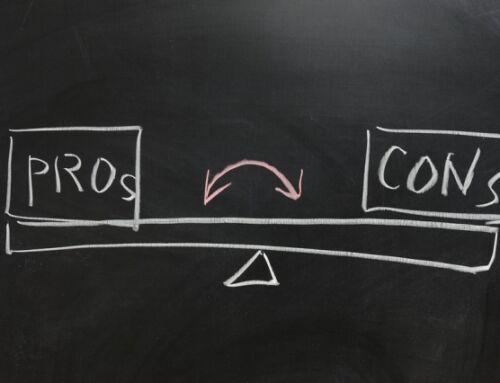If you are an older adult who is considering your senior living options, you may have begun researching various retirement communities. This is often a preference-based move, so a final senior living decision can take months or even years to make. On the other hand, if you have a loved one in need of long-term care or memory care, staying in their current home may not be safe for much longer. In this case, a senior living decision is more needs-based and therefore may move much quicker.
There are many different types of retirement communities and long-term care facilities (especially in larger cities), but once you focus in on a few specific places that meet your (or your loved one’s) specific criteria, you may wonder, “When should I get on the wait list?” as many retirement communities, particularly assisted living or nursing care facilities, are likely to have one. The answer, as with many senior living-related decisions, is: It depends, but sooner is often better than later.
The wait list timing conundrum
Regardless of one’s age or situation in life, ideally, no one should wait until the day they need to move to begin planning. For older adults in particular, a lack of planning can be problematic because of the very subject we are addressing here: how common it is for retirement communities to have a waiting list for new resident move-ins. And because the communities with the best reputations are often in high demand, there is likely to be a wait list for the retirement community or long-term care facility you prefer.
However, one of the challenges of planning ahead for long-term care needs in particular is that it can be hard to foresee exactly when you or a loved one will need it and what level of care may be required. For instance, the need for assisted living or memory care could happen slowly with the natural aging process or the progression of a degenerative disease. Alternately, a care need can occur quickly with an illness or injury, which could necessitate assistance or even skilled nursing care.
For assisted living and memory care wait lists
For those who are looking at an assisted living or memory care community for themselves or a loved one, it is advisable to get on three or four waiting lists as soon as you determine that a care need is on the horizon. This way, when the time comes and care becomes necessary, you will hopefully be near the top of the list for at least one facility.
For continuing care retirement community (CCRC) wait lists
For older adults who are eyeing a proactive senior living move to a continuing care retirement community (CCRC, also known as a life plan community), another crucial consideration is the fact that many of these communities require that new residents be able to “walk in.” This is to say, new residents often must be relatively able-bodied and able to pass a health evaluation when they first move to the community.
Indeed, many life plan communities have a base of very active residents who live completely or mostly independently today but who want to live someplace where a continuum of care services are available to them if and when needed. Most continuing care retirement community contracts offer residents access to an on-site assisted living and/or healthcare center, should they ever need it (though some CCRCs provide these services in off-site facilities).
To the point above, residents moving into a CCRC do not necessarily know when or how much care they may eventually need, but they can have peace of mind knowing they will have ready-access to care services if needed.
>> Related: Early Acceptance: Upgrading the 55 Plus Community Waiting List
How a retirement community waiting list works
Most retirement communities or long-term care facilities will require a deposit in order to add your name to their wait list; the amount can range from a few hundred dollars to a few thousand. In some communities, this deposit may be refundable if you change your mind or get into another facility first; always ask about the waiting list refund policy. As it relates to assisted living facilities in particular, sometimes the deposit will only be refunded in the event that the resident is unable to move into the facility for healthcare reasons.
Many CCRCs also have waiting lists. Yet, the waiting lists for CCRCs are not typically for those who currently need assisted living or nursing care because, as previously mentioned, CCRCs often require new residents to be healthy enough to first move into independent living. Adding your name to a CCRC wait list will often require putting down a deposit (which may or may not be refundable).
However, many CCRCs offer perks to those on their wait list such as use of the community’s pool and fitness center or access to certain other on-campus events and activities. In fact, a growing number of CCRCs are beginning to call their wait list a “membership.” Residents-to-be are encouraged to take advantage of this benefit as it allows you to begin the process of assimilating into the community and meeting future neighbors … even before you live there.
When adding your name to a CCRC or assisted living list, you will typically specify which type of unit you desire, e.g., a patio home, a 1- or 2-bedroom apartment, a single-occupancy room, etc. When a resident living in your desired unit type moves out (often because their needs have progressed and they are transferring into the on-site assisted living or healthcare facility), then the unit will become available to you.
Types of wait lists for retirement communities
There are two common forms of wait lists that you often will find in retirement communities or long-term care facilities.
- The open-ended wait list is the more flexible of the two types. When your name reaches the top of the list, you are not required to move in immediately; you can keep your top position on the list and wait until the next desired unit opens up. The challenge with this type of list is that it gives an inexact picture of how many people are actually ready to move to the community so it can take a long time for your name to come to the top slot.
- Other facilities have a “three-strike rule” wait list. As the name might suggest, for these communities, if you get to the top of the list and turn down that opening three times, you get bumped back to the bottom of the list. You will even run across a few communities that have a one-strike rule for their waiting list.
It is also good to be aware that some communities will have an internal waiting list. If you find yourself in a situation where you need (or want) to move into the community and your preferred unit is not available – forcing you to settle for your second or third choice – you can go ahead and move in but stay on the internal list and wait for your desired unit-type to open up. Existing residents typically get priority over non-residents, so you may be able to get your preference relatively quickly, though you may be required to pay a transfer fee or pay the additional cost if your desired residence is more expensive. Be sure you ask about any charges you will incur.
>> Related: Moving to a CCRC: I’m Not Ready Yet
Your waiting list checklist
Before you get on a waiting list:
- Research, research, research so you are as educated as possible about your senior living options and various scenarios. Be sure you understand the details of the residency contract and what your entry and/or monthly fees include. myLifeSite offers free resources that can help!
- Take a tour of your top contenders; you may find that two or three really stand out when you visit them in person, while others may be easy to eliminate.
- Ask as many questions as you can about the community or facility, their contract types, and their waiting list policies (including refunds).
After you get on a waiting list:
- Relax. You made a major life decision to plan for your future; it will likely feel like a tremendous load has been lifted.
- Begin thinking about organizing your home; consider what you will and will not be able to take with you when the time comes to move.
- Begin thinking about when you will be ready; consider making a list of determining factors such as age, overall health (including ability to safely drive), current housing situation, savings and assets, family considerations, etc.
- Take advantage of any perks offered by the community to future residents who are on the waiting list; you will grow more comfortable with the surroundings and meet new friends too.
>> Related: Trash or Treasure? Why Seniors Should Declutter Their Homes…Today
Making a senior living plan you feel good about
Adding your name to the wait list of a retirement community or assisted living facility is one of the ways you can maintain control over your own decisions and proactively plan for your future. It can be an empowering step that gives you and your loved ones both peace of mind and a level of security, knowing that you will be well-cared for as you age.
Original post date: July 22, 2016; updated January 6, 2025

FREE Detailed Profile Reports on CCRCs/Life Plan Communities
Search Communities






